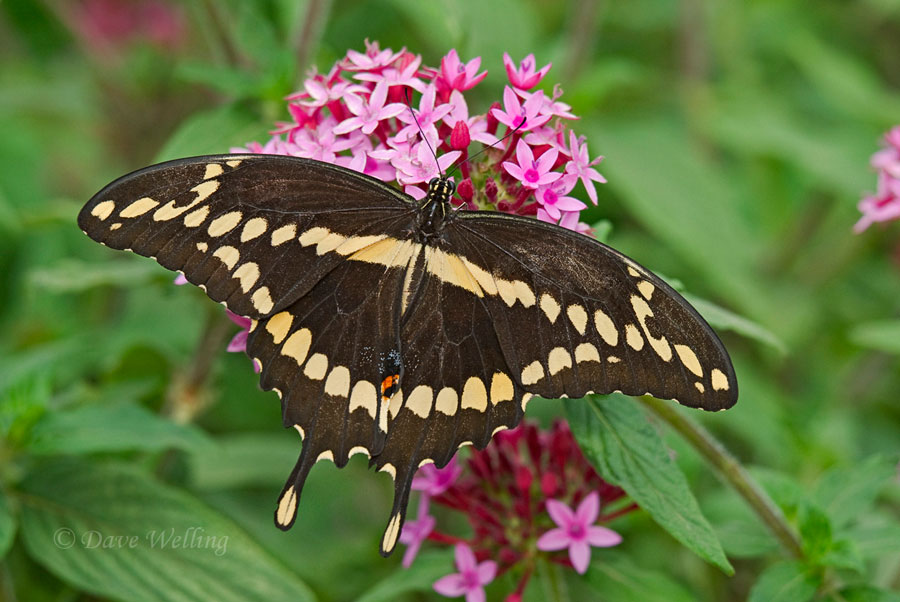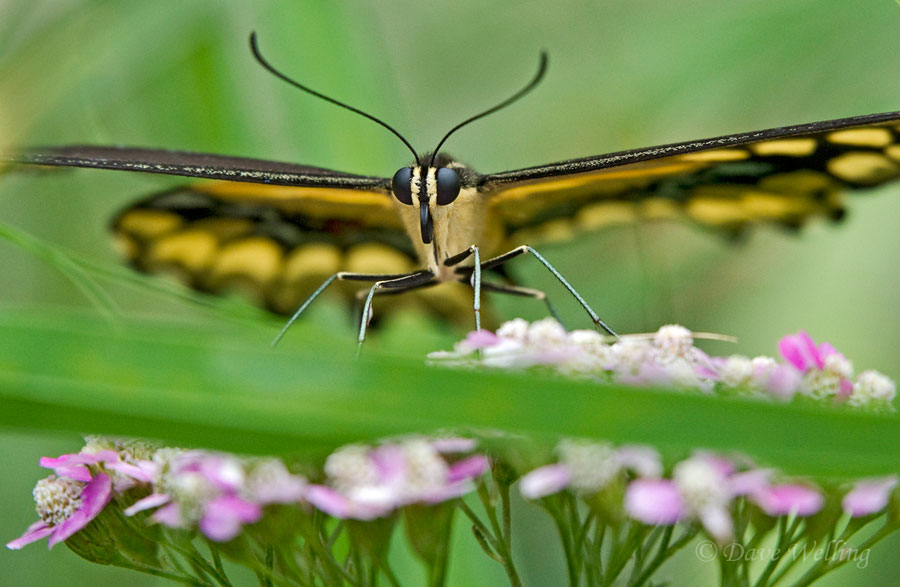Butterflies are fascinating macro subjects with wonderful color patterns and opportunities for great behavioral images. However, they are challenging to photograph. Their erratic flight makes flying images impossible, and when perched, their wing angles often preclude photographing the full wing in focus. When you find a suitable subject, study their habits for a few minutes to get a feel for how they fly and perch. You will be able to better anticipate their actions and capture the image you want.
This is also where a little used function of your camera can be of great benefit: the depth-of-field preview button. Pressing this button while looking through the viewfinder shows you what the film plane or sensor actually sees as the lens is stopped down to your selected aperture. You see what will be in focus so you can adjust your aperture to achieve the range of sharpness you want for a given image. If your lens is wide open you will see no difference with the preview button engaged. If you are stopped down in aperture, the view will darken and you will see the range of focus.
Don’t worry about the darkening image! This just shows you what is in focus. You may have to wait a few seconds for your eyes to adjust to the darkened image. If the sharpness range is too little or too much for your composition, adjust the aperture accordingly. For the image below of the spicebush swallowtail, I wanted the whole butterfly in focus as well as some of the leaves so you could see the eggs laid by the butterfly. This necessitated an aperture of f16 with my telephoto zoom lens and 5T Nikon close-focusing diopter. The depth of field preview confirmed what I was hoping for in overall sharpness.
Giant swallowtail butterflies have beautiful wing patterns. To capture these patterns you need the butterfly to have its wings spread as wide as possible. Butterflies often move their wings as they perch so you need to time your image capture as the wings are as fully extended (the plane of the butterfly as parallel to the camera sensor plane) as possible. This is where studying the subject helps. You get a feel for the timing. For the giant swallowtail image with the wings spread, I needed a depth-of-field great enough to keep the wings and a hint of the flower in focus, but also blur the background to isolate the subject. The preview button helped me choose an f-stop of F9 to achieve the desired results.
For the head-on image of the giant swallowtail I wanted to emphasize the eyes and antennae so I needed a somewhat shallow depth of field. Again, using the depth-of-field preview I determined that F8 would give me the correct, shallow depth of field sharpness but keep the surrounding vegetation blurred.
About the author: Dave Welling is a full time professional photographer specializing in wildlife, landscape and nature with over 75,000 6×7, 6×4.5, and 35mm film and digital images. He has been capturing evocative images of the natural world for over 25 years, producing the highest quality images for publication. His images often capture unique behavioral characteristics of wildlife or special lighting or weather conditions of landscapes. You can see more of his work at www.strikingnatureimagesbydavewelling.com.
Have something to add to the story? Leave a comment or email editor@outdoorphotographyguide.com.




Where is the DOF button on a Nikon D5600?
Okay. I get it but I have a Nikon 3000i ole film camera. Yes so do I. I just started using it yesterday and captured my first bird image on it. I don't have any tips on it for the time being as I am starting to get used to it. Do I look in the handbook to use it's autofocus features as I love to take pictures of nature details like butterflies, birds plants and other creatures too. I like taking pictures of nature mostly and not of people or buildings at this time.
I have a nice digital camera, but I feel like my older 35mm film camera is much better, as far as quality of pictures go. Does anyone else still use this type of camera?
Marvelous!!
thank you
Looking for Tips for using a 70 to 300 Nikon zoom lense Aperture and correct shutter speed
SONO un esperto di foto macro,non professionista